The three pillars of liveblogging are the perfect way for reporters and editors to get started...
Here's How Newsrooms Make Their Election Coverage Stand Out
-1.png?width=800&height=501&name=Hubspot%20Blog%20Images%20(2)-1.png)
In 2024, with elections taking place in over 60 countries and a record number of voters heading to the polls, publishers are laser-focused on being the first to whom readers turn for updates. It's no wonder that the vast amount of election coverage out there might blend into a kind of white noise.
But how can publishers distinguish themselves and keep readers engaged with their coverage? These newsroom have found various ways to answer this question.
How They Connect
Showing the personality of reporters delivering news to their readers goes a long way in building trusting relationships and engagement. These newsrooms nailed it!
👨 Letting readers know who is talking to them:
During their live coverage of the Bavarian state election, Augsburger Allgemeine introduced their contributing reporters to readers and specified which journalist was reporting on each party.
Interestingly, they introduced their reporters not at the beginning of the live blog, as one might expect, but midway through. This helped maintain reader engagement and interest, injecting new energy into the coverage and preventing it from becoming stale.
The Washington Post does the same with their US Election 2024 live blog. However, they include a list of reporters at the beginning of the feed. Here, readers can scroll through the list and click on individual reporters to discover more about them and the articles they've written previously.
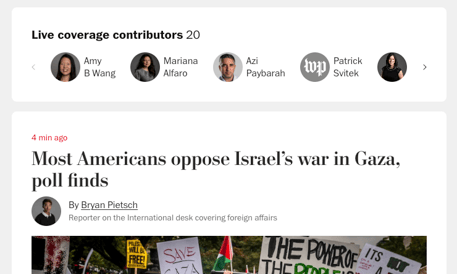
Integrating explainers with reporters
During their coverage of Super Tuesday 2024, The Associated Press occasionally included short videos (<1 min) featuring reporters summarizing key events for their readers.
This informal video format, shot on a phone camera, helps readers connect better with the journalists and see the personality behind the coverage. Moreover, seeing the same faces throughout the coverage makes readers memorize them, which helps build trust and deeper relationships. This also adds variety to the content and prevents it from becoming monotonous.
How They Structure
Initially viewed as a means to satisfy the "Keep Me Up to Date" reader demand, liveblogging has evolved to address a broader range of reader needs. With rising new fatigue, many of them now prefer concise updates over content-heavy longreads. Regardless of reader preferences, these newsrooms use live blogs to cater to all.
Giving a broad view of events
During Bloomberg's coverage of the Pakistan Elections in February 2024, they implemented a timeline displaying key updates on the left side of the live blog. This feature allows readers to see a concise overview and click on any update for more detailed information. The timeline stretches throughout the feed, providing readers with a continuous overview of the situation as they navigate the coverage.

The Guardian introduced a "Show key events only" toddle at the beginning of their Politics live blog, giving readers two kind of stories on a single page. The first allows them to quickly grasp the most important updates on the situation, while the second option provides a more comprehensive story for those seeking more context. Thus, readers can tailor their reading experience to suit their preferences and time constraints.

Der Spiegel incorporated a Highlight Slideshow feature into their Super Tuesday 2024 live coverage using the Tickaroo Live Blog software. This feature allows readers to scroll through updates for a quick overview and click on individual updates to access more detailed information. They accommodate various reader preferences and needs by offering both a snapshot view and deeper insights.

Providing more context
In contrast, The Washington Post ensured that readers could access additional information on the topic if desired. Their US Election 2024 live blog dedicated an entire section to integrating various external articles for more context. They also included a notice stating, "Live updates continue below," to prevent readers from mistakenly thinking the article had ended and exiting the page.
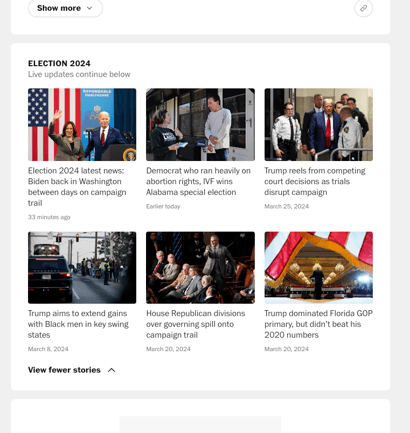
How They Engage
Interactive elements are the heartbeat of a live blog, breathing life into the story. While integrating "fun" elements may seem challenging in political coverage, given its "serious" nature, the versatile liveblogging format offers greater flexibility than a regular article to enrich the story with diverse elements.
Letting readers shape the story
Here, we want to highlight not just a single feature but an entire project implemented by Zeit and shared in a live blog called "Die 49" ("The 49"). They invited 49 individuals from diverse backgrounds and demographics to discuss the upcoming 2021 Elections in Germany. The result was a live blog filled with participants' pictures, stories, and opinions, serving as an exemplary model of engaging and audience-focused journalism. Here's what stands out:
- The project participants were selected from Die Zeit's readership to represent a broad demographic cross-section of the country. This approach empowered individuals to shape the news and made them feel that their opinions mattered to the newsroom.
- Die Zeit brought the topic of elections closer to people by addressing relevant questions and issues for them - for example, their living situations and the housing costs in their regions.

Integrating from-the-scene visuals
In their India Elections 2024 live blog, The Hindu seamlessly integrated embeds from X throughout the entire coverage. Primarily, they showcased short videos of candidates filing their nominations. By incorporating tweets alongside traditional reporting, they infused their coverage with dynamism and diversity, leading to improved retention time.
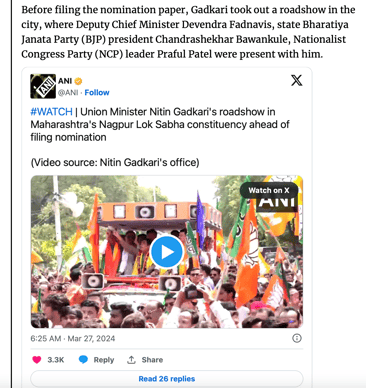
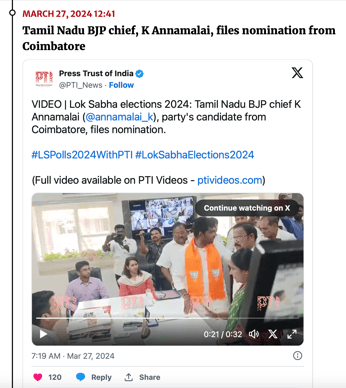
Fostering a dialogue
It's not common for newsrooms to integrate comment sections into their political or election coverage. That's why we were thrilled to see Stuff include a comment section in their political live blog. They asked readers for their opinions on a government decision discussed in the liveblog and received an impressive 341 responses in less than 24 hours!
Adding the comment section right in the middle of the live blog enhances the reader experience by increasing interactivity and fostering a sense of community around the topic. Readers feel that their opinions matter. After having the opportunity to share their thoughts and see what others are thinking, readers are more likely to continue scrolling through the live blog feed to see what else is coming. Unlike regular articles where comment sections are typically found only at the very end, this approach offers a more engaging and interactive experience for readers.
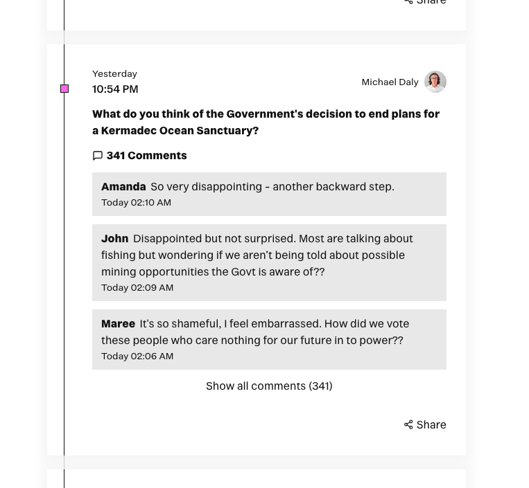
Conclusion
There's no one-size-fits-all solution to combatting rising news fatigue among readers, especially when it comes to political coverage. However, many newsrooms use live blogs effectively to make news more manageable and engaging for their audience. By showcasing the personalities behind the coverage, creating clear structures, allowing readers to customize their reading experiences, and providing platforms for interaction, news outlets are helping readers feel less overwhelmed and more satisfied with the news they consume.
As the election year continues, we're excited to see even more captivating election waiting for us!

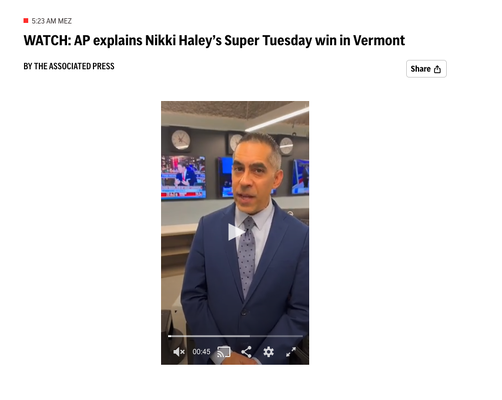




Blog comments